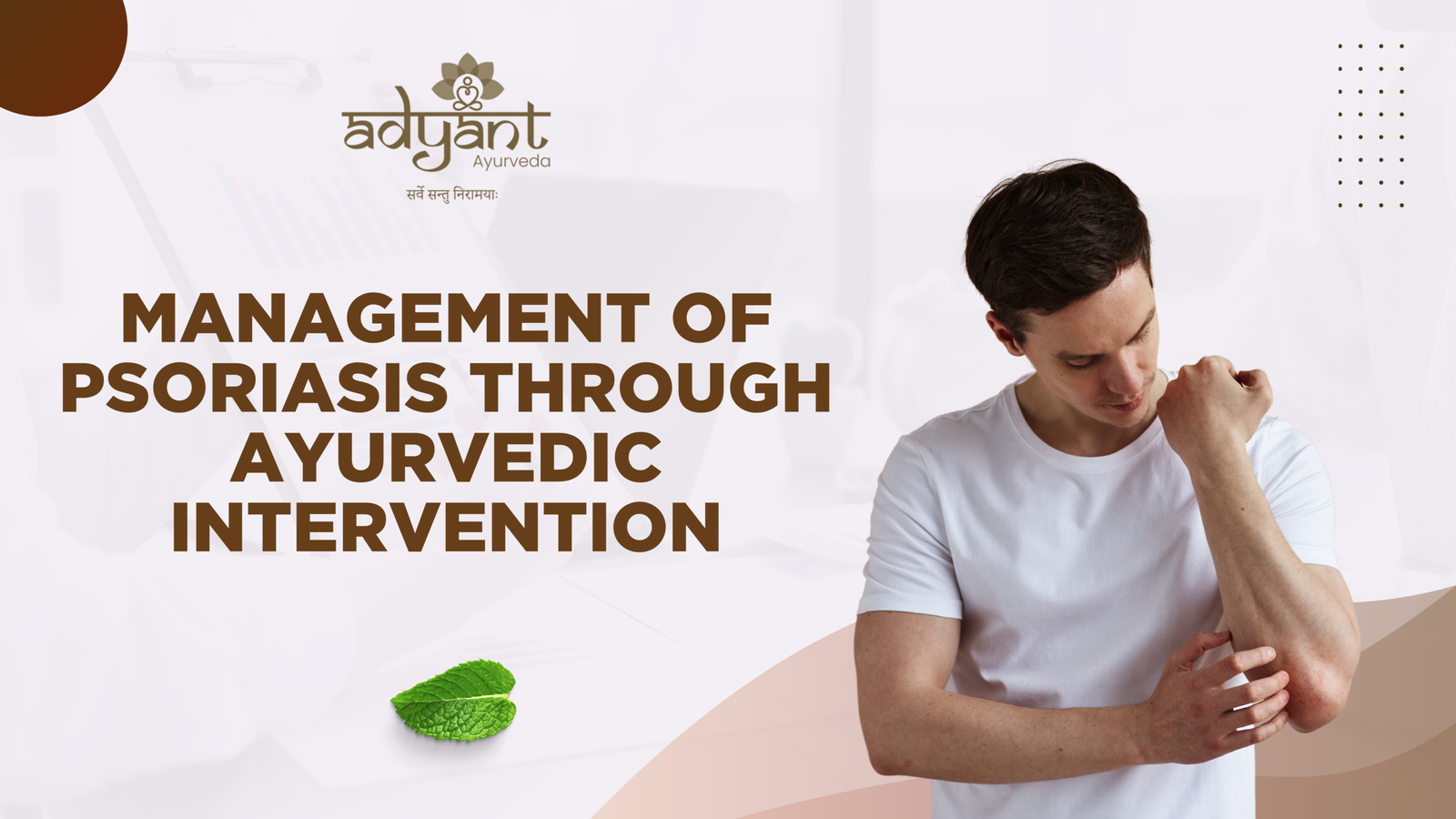Table of Contents
ToggleUterine fibroids—also called leiomyomas or myomas—are noncancerous growths composed of muscle and fibrous tissue that develop inside or around the uterus. These growths are highly common among women of reproductive age, affecting up to 70–80% of women by age 50. While some fibroids are small and symptomless, others can cause heavy menstrual bleeding, pelvic pressure, frequent urination, pain during intercourse, and even infertility.
Conventional medicine often resorts to treatments like hormonal therapies, laparoscopic removal, or hysterectomy. While effective short term, these approaches may lead to side effects or recurrence. Ayurveda, the ancient science of life, provides a gentle yet powerful alternative that emphasizes balancing doshas, removing toxins (ama), and rejuvenating the reproductive system for long-lasting results.
For Free Consultation, Download Our App “AyurCare“
Understanding Uterine Fibroids in Ayurveda
Ayurveda identifies fibroids as Granthi (glandular swelling) or Arbuda (tumorous growth), caused by the vitiation of Vata, Pitta, and Kapha doshas—primarily Kapha.
Charaka Samhita, Chikitsa Sthana 12/88
“Vātādibhirupakliṣṭair granthayo ye tu jāyate |
Te tu śopha-vibhedāśca jāyante sarva-dehajāḥ ||”
Translation:
“Granthis (tumors) are formed due to the vitiation of Vata and other doshas. These manifest as swellings and masses in different parts of the body.”
Dosha-Specific Contributions:
Kapha (dominant): Promotes abnormal tissue growth, stagnation, and heaviness, leading to the formation of fibroids.
Vata: Especially Apana Vata, when disturbed, impairs proper tissue metabolism and elimination, allowing growths to develop.
Pitta: Causes inflammation, excessive menstrual bleeding, and localized heat, which further aggravate the condition.
Role of Ama and Dhatu Dushti:
Ama (toxins): Indigested food and mental toxins accumulate in the uterus, blocking channels (srotas) and creating an environment for abnormal growth.
Mamsa Dhatu Dushti: Defective muscle tissue metabolism contributes to fibroid development.
You can also read: Ayurveda doshas
Ayurvedic Diagnosis of Uterine Fibroids
Ayurveda employs Ashtavidha Pariksha (Eightfold Examination) and Dashavidha Pariksha (Tenfold Examination) to assess a patient’s condition.
Ashtavidha Pariksha:
Nadi (Pulse) – Reveals dosha predominance (often Kapha-Vata)
Mutra (Urine) – Indicates metabolic imbalance
Mala (Stool) – Shows digestive irregularities
Jihva (Tongue) – A coated tongue reflects Ama
Shabda (Speech) – Affected in systemic imbalances
Sparsha (Touch) – Indicates coldness, stiffness
Drik (Eyes) – Lusterless eyes may indicate an internal disorder
Akruti (Body build) – Reflects doshic dominance
Dashavidha Pariksha includes:
Prakriti (constitution)
Vikriti (current doshic imbalance)
Agni (digestive power)
Sara (tissue integrity)
Satva (mental strength)
Vyayamashakti (exercise capacity)
This deep diagnostic framework tailors the treatment to each woman’s unique body-mind profile.
Causes of Uterine Fibroids (Nidana)
Diet & Lifestyle Causes:
Excessive consumption of oily, sweet, heavy foods
Regular intake of meat, dairy, and fried items
Sedentary habits
Chronic stress and emotional suppression
Irregular eating or sleeping patterns
Hormonal & Genetic Causes:
Estrogen dominance (linked to obesity, hormonal imbalance)
Early menarche (onset of periods)
Lack of childbirth
Family history
Types of Uterine Fibroids
| Type | Location |
|---|---|
| Intramural | Within the uterine muscle wall |
| Subserosal | On the outer wall of the uterus |
| Submucosal | Just beneath the inner lining of the uterus |
| Pedunculated | Attached to the uterus by a stalk |
| Cervical | In the cervix (rare) |
Comparison with Other Disorders:
| Condition | Key Feature |
|---|---|
| Fibroids | Tumors in the uterine muscle |
| PCOD | Cysts due to hormonal imbalance |
| Endometriosis | Uterine-like tissue outside the uterus |
Additional Ayurvedic Concepts to Enrich Understanding
Why Fibroids Occur – In Layman’s Terms
When digestion is weak, undigested food turns into sticky toxins (Ama) which settle in weak organs—especially the uterus.
Emotional stress blocks Vata, the energy responsible for elimination, leading to stagnation and growth of fibrous tissue.
Hormonal imbalance fuels the problem—like adding oil to fire—causing abnormal bleeding and fibroid growth.
Ayurvedic Treatment for Uterine Fibroids
The Ayurvedic protocol focuses on:
Pacifying vitiated doshas
Detoxifying the system through Panchakarma
Shrinking fibroids with herbal formulations
Strengthening uterine tissues through Rasayana
Panchakarma Therapies:
Vamana (Emesis) – Removes excess Kapha from the upper body.
Virechana (Purgation) – Cleanses Pitta toxins, especially for women with bleeding.
Basti (Medicated Enema) – Vital for Vata imbalance; restores balance and eliminates toxins.
Uttar Basti – Medicated oils introduced via the vaginal route, directly targeting uterine fibroids.
Nasya – Nasal therapy used when hormonal disturbance is linked to the pituitary/thyroid axis.
Advanced Panchakarma Protocol for Large Fibroids
A structured 3-phase treatment is followed:
1. Purvakarma (Preparation):
Abhyanga (oil massage) and Swedana (steam) loosen toxins.
2. Pradhana Karma (Main Therapy):
Administer Basti, Uttar Basti, and Virechana with fibroid-specific oils like Kshara Taila or Ashokadi Taila.
3. Paschat Karma (Post Therapy):
Rejuvenating herbs and a special diet for recovery and prevention.
Key Ayurvedic Herbs & Formulations
| Herb/Formula | Action | Effect |
|---|---|---|
| Kanchanara Guggulu | Lekhana, Kapha-Vata shamak | Shrinks the fibroid mass |
| Haridra Khanda | Pitta-Kapha shamak | Reduces inflammation and bleeding |
| Shatavari | Rasayana, Balya | Nourishes the uterus and supports hormones |
| Chandraprabha Vati | Tridosha shamak | Balances cycles, strengthens the uterus |
| Ashoka & Lodhra | Stambhana, Kapha-pacifying | Controls bleeding and promotes healing |
Other Effective Medicines:
- Dashmoolarishta – Rejuvenates the uterus
- Varunadi Kashayam – Works on cystic disorders
- Pushyanuga Churna – For menorrhagia (heavy bleeding)
Rasayana (Rejuvenative) Therapy Post Detox
To prevent recurrence and enhance recovery:
- Ashwagandha: Strengthens reproductive tissues, reduces stress
- Amalaki: Antioxidant and Pitta-pacifying
- Shatavari Ghrita: Uterine tonic and fertility promoter
- Chyawanprash: General Rasayana post-treatment
Duration: 1–3 months, depending on age and Prakriti
Diet & Lifestyle Guidelines
Foods to Include:
- Whole grains: Barley, millets, oats, wheat
- Veggies: Beans, carrots, spinach, cabbage
- Fruits: Pomegranate, figs, pineapple
- Spices: Turmeric, cumin, coriander
Avoid:
Red meat, deep-fried foods, excess dairy, sugary snacks
Lifestyle:
- Daily yoga, 30 minutes of brisk walking
- Anulom-Vilom Pranayama
- Regular oil massage (Abhyanga)
Yoga for Uterine Health
- Suptabaddhakonasana – Improves pelvic circulation
- Setu Bandha Sarvangasana – Balances hormones
- Suptavirasana – Aids digestion and calms Vata
Emotional & Psychological Support in Ayurveda
Fibroids often contribute to emotional stress, anxiety, and body image issues. Ayurveda addresses this with:
- Satvavajaya Chikitsa: Mind-balancing therapy
- Shirodhara: Warm oil flow on the forehead to calm the mind
- Medhya Rasayana: Brahmi, Jatamansi, Ashwagandha for mental clarity and hormone balance
Timeline of Healing
| Duration | Expected Outcome |
|---|---|
| 1 Month | Pain and bleeding reduced |
| 3 Months | Visible reduction in fibroid size (USG) |
| 6 Months | Regular periods, hormonal improvement |
| 9–12 Months | Reproductive and mental health restored |
Case Study Reference at Adyant Ayurveda
7 women were treated using Kanchanara Guggulu, Shigru Guggulu, and Haridra Khanda.
5 experienced complete resolution within 49 days, confirmed via USG.
No surgery required.
Ayurveda vs Modern Medicine: A Comparative Insight
| Parameter | Modern Medicine | Ayurveda |
|---|---|---|
| Treatment | Surgery, hormonal suppression | Herbal therapy + Panchakarma |
| Side Effects | High (e.g., weight gain, recurrence) | Minimal when customized |
| Fertility Impact | May reduce fertility | Preserved or improved |
| Long-Term Efficacy | Risk of recurrence | Preventive with Rasayana |
| Cost | High | Moderate & personalized |
Safety & Contraindications
Avoid Panchakarma in:
Pregnancy
Severe anemia (correct first)
Very large fibroids with compression symptoms (monitor closely)
High Pitta types (balance with cooling herbs like Shatavari, Amalaki)
Monitoring Guidelines:
Always begin under a qualified Ayurvedic physician
Conduct periodic USG and blood tests
Customize therapy based on Prakriti, Dosha, and Agni
Additional Therapies for Uterine Fibroids
Lepa (Uterine Poultice Therapy)
A warm herbal paste (using Dashamoola, Eranda leaves, or Triphala) is applied over the lower abdomen to reduce inflammation, pain, and heaviness.
Kshara Karma (Alkali Cauterization – Internal Use)
In resistant or chronic fibroids, specially prepared alkaline extracts are applied internally (by trained physicians only) to help dissolve stubborn fibroid masses.
Garbhashaya Balya Chikitsa (Uterine Strengthening Therapy)
Post-detox, herbs like Bala, Guduchi, Shatavari, and Ashwagandha are used to restore uterine elasticity, improve endometrial lining, and prepare for fertility.
Long-Term Post-Healing Guidelines
Even after fibroids shrink, follow-up care is essential:
| Timeline | Follow-Up Care |
|---|---|
| Monthly | Self-abhyanga (oil massage), warm water intake with Triphala |
| Quarterly | Herbal rasayana tonic like Shatavari Ghrita or Ashwagandhadi Lehyam |
| Annually | Mild Panchakarma (Uttara Basti and Virechana) under supervision |
| Ongoing | Yoga and Pranayama to maintain Vata balance and reduce estrogen excess |
Real-World Patient Testimonial
Patient Story: Avoided Surgery with Ayurveda
“I had two fibroids—one 3.5 cm and one 4.2 cm. Doctors suggested hysterectomy. I visited Adyant Ayurveda, where I underwent Uttar Basti and took Kanchanara Guggulu, Chandraprabha Vati, and Dashmoolarishta for 4 months. My USG in the 5th month showed only one fibroid left and it had shrunk to 2.1 cm. No surgery needed. I feel balanced and pain-free now.”
– Meghna R., 38, Bangalore
For Free Ayurvedic Fibroid Evaluation
Download our app “AyurCare” or call 9972541009 to consult the best Ayurvedic gynecology doctors at Adyant Ayurveda.
Personalized Dosha-Based Plans
USG and Symptom Monitoring
Female Ayurvedic Specialists
Why Choose Adyant Ayurveda?
More than 24 years of Ayurvedic expertise
Experienced female doctors for gynecological care
Personalized dosha and hormone-based diagnostics
Safe herbal treatments without side effects
Success-proven non-surgical approach with documented case studies
Seamless consultation through the “AyurCare” mobile app
Final Thoughts
Uterine fibroids can deeply affect a woman’s physical, emotional, and reproductive well-being. While modern treatment may offer symptomatic relief, Ayurveda goes beyond—healing the root cause, detoxifying the body, and strengthening the uterus naturally.
“Yoni hi narīnām mūlaṁ prabhavati sroter api |
Tasyāḥ prakṛtiṁ saṃrakṣāyā yathā bhavati garbhadhā ||”
Translation:
“The uterus (yoni) is the source of womanhood and even creation. Its natural state should be preserved for it to be capable of conception.”
Through Panchakarma detox, tailored herbs, dietary balance, and Rasayana rejuvenation, Ayurveda offers a gentle, safe, and permanent solution for fibroids without invasive procedures.
Reclaim your feminine health the Ayurvedic way—natural, sustainable, and empowering.
FAQs: Ayurvedic Treatment for Uterine Fibroids
Can Ayurvedic treatment shrink uterine fibroids naturally?
Yes. Ayurvedic herbs like Kanchanara Guggulu, Haridra Khanda, and therapies such as Basti and Uttar Basti help reduce the size of fibroids by correcting doshic imbalance, removing toxins (ama), and regulating hormonal function.
How long does it take to see results with Ayurvedic treatment for fibroids?
Depending on the fibroid size, doshic involvement, and the patient’s constitution, visible improvements—like reduced pain and bleeding—can appear within 1 to 3 months. Significant shrinkage is usually observed within 3–6 months, with com9–12 monthsplete results over .
Can Ayurveda treat fibroid-related infertility?
Yes. Ayurvedic treatment focuses on improving uterine health, balancing Apana Vata, and reducing inflammation, which improves fertility outcomes in many women suffering from fibroids.
Is Panchakarma necessary for every fibroid case?
Not always. Mild or early-stage fibroids may respond well to internal herbal medications alone. However, Panchakarma is recommended in moderate to severe cases for detoxification and long-term prevention.
Are Ayurvedic medicines safe for long-term use?
When prescribed by a qualified Ayurvedic doctor, medicines like Chandraprabha Vati, Shatavari Ghrita, and Kanchanara Guggulu are safe and effective for long-term use. Regular monitoring and dosage adjustments ensure safety and efficacy.
Can I take Ayurvedic treatment along with allopathic medicines?
Yes, but under strict medical supervision. Some herbs may interact with hormonal or anticoagulant medications. Always inform both your Ayurvedic and allopathic doctors before combining treatments.
Is surgery avoidable with Ayurvedic treatment?
In many cases, yes. Ayurveda has shown successful outcomes in avoiding surgery for small to medium-sized fibroids. However, very large fibroids causing severe compression may still require a surgical opinion.
What diet should I follow during Ayurvedic treatment?
Focus on Kapha-Pitta pacifying foods:
- Eat light, warm, and fiber-rich foods like barley, spinach, carrots, and pomegranate.
- Avoid dairy, red meat, sweets, and fried foods.
- Include turmeric, cumin, and coriander to support digestion and detox.
Will fibroids recur after Ayurvedic treatment?
Recurrence is rare if proper detox, dietary discipline, and Rasayana (rejuvenation) therapy are followed. Annual Panchakarma and lifestyle maintenance can help prevent relapse.
Is Ayurvedic treatment suitable for menopausal women with fibroids?
Yes. Ayurvedic therapies can help shrink fibroids even after menopause, improve general uterine health, and prevent associated discomforts without the need for hormones or surgery.
Medical Review by Dr. Shree Lakshmi (BAMS – Gynaecology), Senior Ayurvedic Consultant at Adyant Ayurveda, with 25+ years of expertise in treating uterine fibroids holistically through Panchakarma and herbal medicine.
Disclaimer:
This content is for educational purposes only. Please consult a qualified Ayurvedic physician before starting any treatment. Individual diagnosis and tailored planning are essential for safe healing








